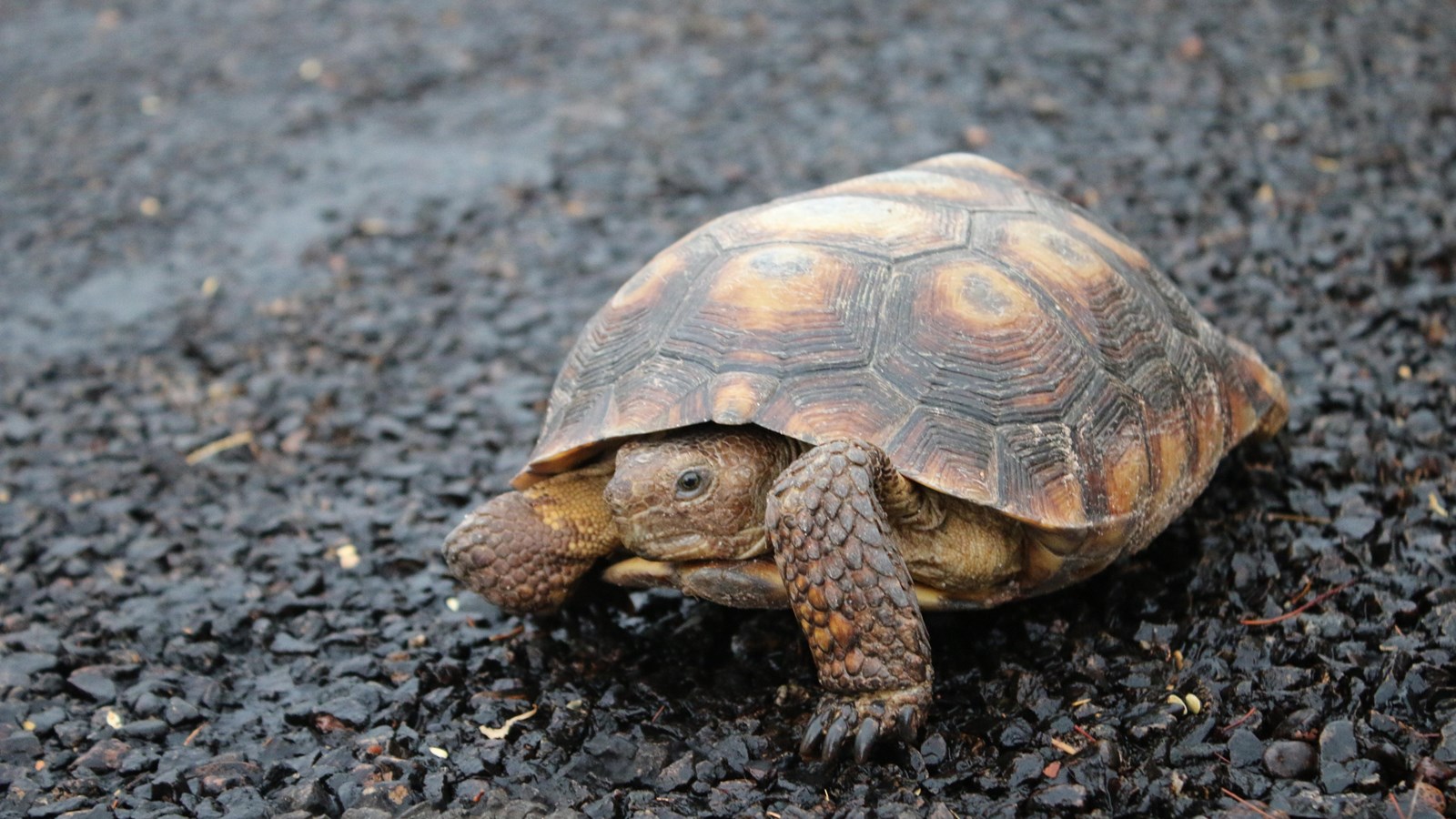Last updated: June 18, 2021
Place
Ajo Mountain Drive Stop 5

NPS Photo/KCeballos
Quick Facts
Location:
Mile 4.7 [km 7.6] along the Ajo Mountain Drive
Stop 5
At Home in the Desert
The sounds of thunder and drumming of rain on the ground during a summer monsoon signal the spadefoot toad to emerge from its subterranean home to breed in temporary pools or tinajas. Eggs will hatch quickly. Tadpoles must mature to adulthood in as few as two weeks before the tinajas dry up. These adaptations to ephemeral ponds allow the spadefoot to thrive in the Sonoran Desert.
Have you ever walked across a sandy beach or wash? Its a remarkably tiresome job. The sidewinder is named for its ability to move over loose or unstable sand. This rattlesnake has adapted to living in the Sonoran Desert by moving, or winding, in a way that allows it to move across sandy surfaces quickly and efficiently. This winding movement gives the appearance that the snake is moving sideways.
Imagine spending up to nine months a year underground to escape the heat! The desert tortoise spends this much of its time below ground, coming out only to eat, drink and mate at dawn and dusk.
The summer monsoons offer a welcome respite from the dry landscape and tortoises take advantage of these rains, increasing their outside activity.
